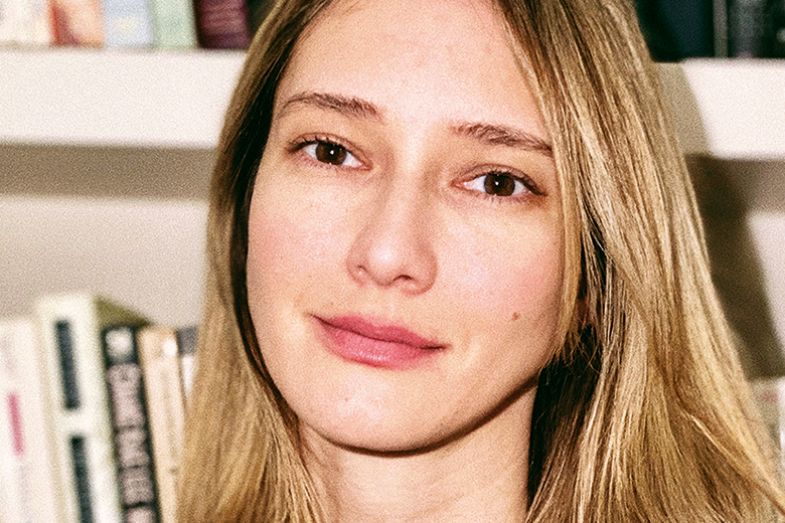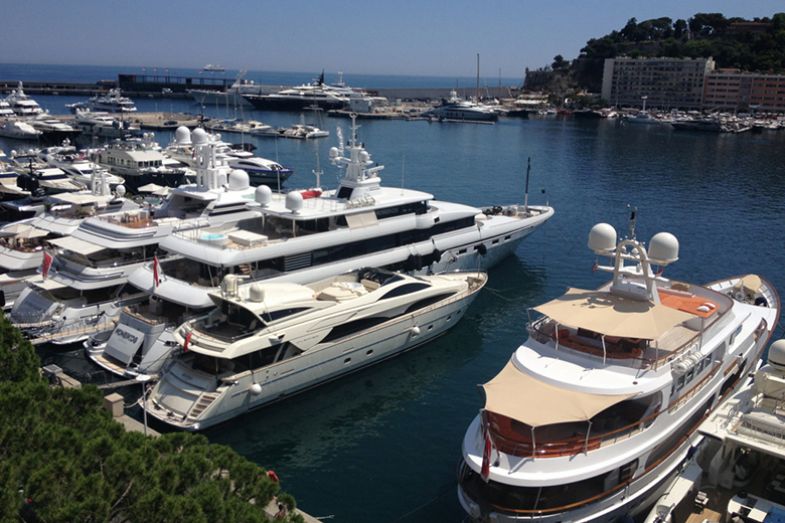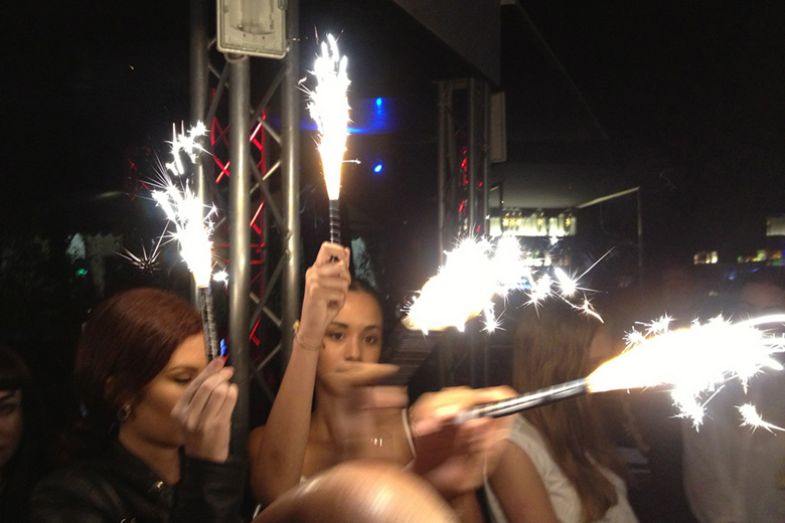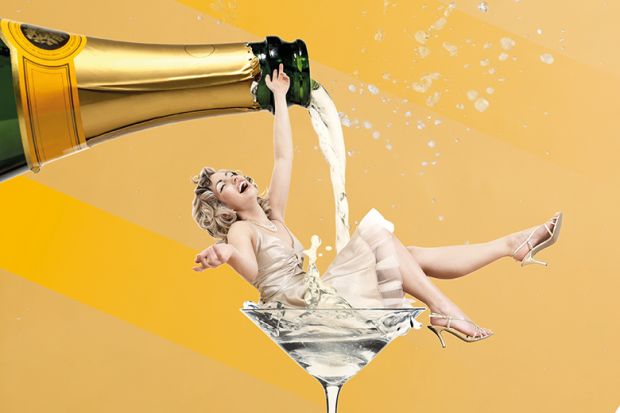There is a scene in Ashley Mears’ new book on the “global party circuit” in which she is spending the weekend in a mansion owned by three wealthy middle-aged New York businessmen. They have invited a bevy of beautiful young women to stay in what one of them calls “model camp” and have thoughtfully replaced the chlorinated water in the swimming pool with salt water to spare their blonde highlights.
When Mears thanks one of the businessmen for the invitation and tries to interview him, making clear that she won’t use his real name in anything she writes, he responds: “Oh, you don’t get it. You think you’re invited for being a writer. You’re invited because you’re a hot girl.”
“I’d like to use the weekend as a research experience,” Mears points out.
The businessman merely shrugs and replies: “You can use it as a suntan experience.”

Clashes between the norms of academic research and the glitzier worlds she studies have long been a feature of Mears’ career.
Now an associate professor in the department of sociology at Boston University, she worked as a model during her undergraduate degree, both in local department stores and across the world during vacations. By the age of 23, she had put that behind her and started graduate school at New York University, keen to research the gender politics of beauty and the body. But, as she recounts in her 2011 book, Pricing Beauty: The Making of a Fashion Model, a model scout approached her in Starbucks and told her he could help her make a fortune.
She had already read an interview with the famous sociologist Erving Goffman, Mears tells Times Higher Education, in which he “advised field researchers to leave everything behind and go in full [tilt] and try and experience a world in exactly the same way as their informants. That really resonated when I was 23 and carving out research agendas.” She therefore signed up with two modelling agencies and took on assignments with a view to using her participant observation for a PhD (and, later, Pricing Beauty, which sets out to capture from the inside “all of the wonder and brutality” of life as a model). For two and a half years, she went to castings, catwalk shows and magazine shoots, while also interviewing many of the people involved.
It could be challenging to find styles of dress appropriate to both casting sessions and graduate seminars, as well as to “come out” as a scholar. “It would have been pretty awkward,” she writes, “to first introduce myself to clients at castings as an eighteen-year-old model, as bookers had instructed me to do, and then ask for permission to observe the casting for my PhD research.”
On the one hand, Mears was in the same precarious position as the other models, desperate to be attractive and accommodating enough to get the work her research depended on. On the other hand, she recalls, she “found it quite empowering to embrace all the working conditions which revolve around rejection and physical scrutiny, being told to lose weight and get in shape. I took it very personally when I was a teenager modelling in college, but going in as a researcher I found it very helpful to be able to say: ‘This is all data for me. I can use it. The worse people are, the better the research is!’”
But although Mears experienced a lot of rejection, humiliation and belittling (for many people, it simply didn’t compute that a model could be doing a PhD), she also found herself “seduced by the glamour and the excitement. There was a moment in graduate school when I was invited to go to the shows in Paris. Though it was right at the start of the semester and I had lots of course work, I almost wrote to my professors to say: ‘I’m putting everything on pause because I am going to go to be a model for real.’ It took a week for me to realise that was actually a really bad idea.”
Fashion is a vast and important industry yet comparatively neglected and often disdained in the academy. But Mears sees parallels between the conference circuit and the catwalk.
“The academy is not quite as winner-takes-all and ruthless in its inequality as modelling is,” she reflects, “but there is still a very strong and clear status hierarchy. It becomes particularly manifest at conferences in terms of who is talking to whom, well-connected advisers, the attention given to name tags and so on.”

Marking status is at the very heart of Mears’ new book, Very Important People: Status and Beauty in the Global Party Scene.
After she got a job at Boston University in 2009 and was looking for a new research project, she recalls, she started to get interested in stories about the grotesque amounts of money the mega-rich were spending in nightclubs even in the wake of the 2008 financial crisis. Although she was no longer involved in the fashion industry, she would still get the occasional message from some of the “promoters” she had run into at casting sessions on the lines of: “Hey, baby! Do you want to come for sushi dinner?” Promoters play a very specific role in the night-time economy, and re-establishing contact with them offered her an entrée into a world she reconstructs in horrifyingly compelling detail in Very Important People.
Clubs love to welcome the “whales” who splash around expensive champagne and sometimes compete with each other to blow more than $100,000 in a single night. The most notorious example, at the time when Mears was doing her research, was the Malaysian businessman Jho Low, rumoured to have once run up a bar tab of more than $1 million in St Tropez. Photos showing him at a table with dozens of magnum bottles, sparklers and Paris Hilton appeared all over the world. A particular status symbol for such men is to be surrounded by dozens of models. (Just as some people pride themselves on recognising the most expensive wines, it is considered a sign of sophistication in such circles to be able to tell a real model from “a good civilian” or “just a hot girl”.) It is the role of the promoters to round up enough models to provide a glamorous backdrop for the “whales” and so persuade them to splash out.
The whole thing, as Mears puts it, is “about the visible signs of sexiness but not the pursuit of sex”. A vignette from her book captures the striking “division of labour” employed by the clubs: “The busboys who carry trays of empty bottles and glasses are short and brown-skinned Latinos, between five feet three and five feet five tall...Sometimes they hold flashlights above their heads so you know they are coming through, but you can hardly see the body beneath the light.” By contrast, the cocktail waitresses, “called ‘bottle girls’, are tall, voluptuous and relatively racially diverse, their dresses as tight and revealing as their heels are high; they stand for sex and, according to Dre [a promoter], they are as much for sale as the bottles they carry. Unlike the seemingly available bottle girl, the fashion model represents not sex but beauty – a prize of far greater status. While everyone else – bouncer, busboy, filler, and even the bottle girl, except when needed – tends to fade into the background, the model is meant to stand out.”
The promoters bridle at any suggestion that they are basically pimps. And, indeed, the “whales” often don’t bother even to talk to the models they are surrounded by, using them instead as flattering decor for “homosocial” networking with potential business partners.
Yet the whole set-up is riddled with exploitation and self-delusion. The “girls” (as Mears makes a point of calling them, since that is how everybody else refers to them) may get free meals at smart restaurants, or even free trips to the French Riviera, in return for sitting and dancing around in clubs looking beautiful, but they are not paid. The promoters may look after the models they have recruited, driving them to castings or helping them move apartment, yet there is something fundamentally exploitative about these faux-friendships, since they disguise the reality of what Mears calls “girl capital”. Promoters are paid by the clubs to turn up with cartloads of beautiful young women, and the form of currency that their beauty constitutes, she suggests, is used by the clients to “make profits or build connections with other rich people” – rather than enriching the models themselves. At the same time, many of the promoters are self-deluded, convinced that their much richer clients are genuine friends who might be willing to back their half-baked business schemes.

Hence, Very Important People documents “a ritualized form of wealth destruction in the elite club scene, one that repeats around the world, from the Hamptons to Saint-Tropez”, and which “suspends the deliberateness of status-seeking, primarily by making it seem spontaneous and playful”. To find out about it, of course, Mears’ only option was to follow Goffman’s principle of total immersion again.
This involved drawing on what she calls her own “bodily capital” and becoming a “girl” herself, going out with promoters for over a hundred nights at 17 New York clubs (along with trips to Miami, the Hamptons and the south of France).
Such fieldwork proved “an intense emotional experience”, she confesses. “There were moments when I felt I’d had enough of being looked at, being judged on my appearance, my hair and my shoes, and felt completely drained. There was one moment in a club in Miami when I was sleep-deprived and it was probably 1 [o’clock] in the morning. Everybody was dancing and having a really good time. I just went to the bathroom and was crying.
“I would write my notes in the bathroom as a really welcome break. I would wander off and smoke a cigarette and try to decompress and then jump back in and pretend I was having a really good time.”
It would be easy to write a really black satire about the milieu described in Very Important People, which feels both repellent and ridiculous – particularly at a time when social life has come to a standstill. But although Mears clearly reveals the horrible aspects of a party scene in which a bottle of champagne costs as much as her month’s rent, she also wants to make a number of more complex points.
“I began the project seeing the promoters as being pretty sleazy and capitalising on their structural position of advantage to make money off girls who are not in the same position,” she reflects. “I found their use of girls as capital really troubling and disturbing. I thought the promoters would be the villains of my narrative. But as I spent time with them, I began to empathise with them and see [their behaviour as a symptom of] a broader structural problem of extreme wealth and inequality [in which] they are such dreamers and schemers and think they will be as rich as the extremely wealthy people around them. I felt kind of sad for them and wanted to convey that.”
It is really valuable and important to have “a standard second-wave feminist narrative about ‘here’s the oppression and here’s the subordination’”, Mears goes on, “but the whole system holds together because people are enjoying it. It stokes something in their own desires and egos. To be subordinated as a girl in this system is also deeply satisfying. It’s incredibly pleasurable and powerful. In sociology, at least, we haven’t really embraced pleasure and fun as important analytic insights into how systems of inequality function.”
As for her personal experience of “the circuit of high-end nightlife”, Mears notes that, for all the strains, “there were certainly moments when it was very thrilling and exciting to be with very wealthy people, that I might be able to fly with them on their private planes – I wanted to do those things. I was excited to be invited and included, while seeing a lot of really bad conditions.
“I sometimes did get into the spirit of it. The aim of going out to a club is to build this kind of collective effervescence, where everybody is in the beat together – a skilled DJ can do it really well by building the music and the lighting. To be surrounded by wealth and beauty, I can’t say it doesn’t have some kind of sensory effect. There’s the pleasure of feeling included in that.”
What remained “quite jarring” was “the presumed physical accessibility of women’s bodies, just by virtue of being in a club. Men who I had never met before would feel at liberty to put their hands on me. It’s especially common among promoters, who are constantly doing this to build a feeling of closeness with the girls they have around them.”
And with the attention came constant and often vicious comments about women’s appearance – and the assumption that Mears' then age of 32 was, she writes, “an unfortunate disease I was managing well, for now”. Yet even here she detects a kind of honesty when “promoters put into words what people experience in the day to day, including in academia: that beauty is valuable, that women lose something in getting older. Promoters are just more explicit in saying what most people kind of feel.”
Although most of us are unlikely to attend the kind of parties described in Very Important People, even after lockdowns are a distant memory, Mears says that “their gender and status dynamics are generalisable to a lot of other worlds in which women are valued for looks, devalued for age, and, despite the inequalities, accept these terms for a chance to be a part of exciting and self-affirming scenes” – not least “in the college frat party scene”.
Asked how we might create less objectionable forms of socialising and gender relations, she mentions “alternative scenes, like queer party spaces which welcome age and body diversity”, while social media “enable people to subvert traditional status and gender hierarchies in definitions of beauty. So there is always resistance.”
Alternatively, “another way to imagine something better is to envisage how rich and powerful women would design the party”, Mears continues. “My ideal world would have equal opportunity for men and women alike to be objects of beauty, but not just beauty.”
Although, like others before her, she has become much more sceptical about Goffman’s ideal of total research immersion now that she has young children, Mears has surely identified some intriguing areas for further research.
POSTSCRIPT:
Ashley Mears’ Very Important People: Status and Beauty in the Global Party Scene is about to be published by Princeton University Press.
Register to continue
Why register?
- Registration is free and only takes a moment
- Once registered, you can read 3 articles a month
- Sign up for our newsletter
Subscribe
Or subscribe for unlimited access to:
- Unlimited access to news, views, insights & reviews
- Digital editions
- Digital access to THE’s university and college rankings analysis
Already registered or a current subscriber?








